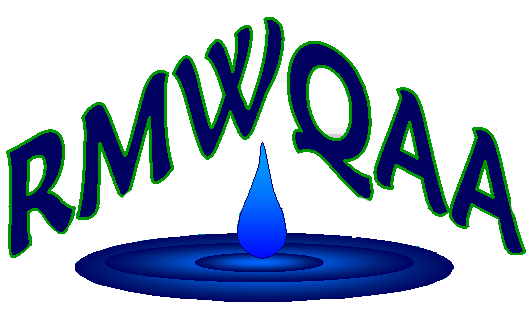Deionized water (DI) or other forms of ultrapure water are extremely important to laboratory data quality. It is used for mixing reagents, rinsing/cleaning equipment, or running blanks or controls. Deionized water is generally tap water treated with one or more ion exchange resins to reduce major ions to extremely low concentrations (conductivity <4 µS/cm). For many labs, this water provides the quality necessary for reagent preparation and/or blank analyses. Additional treatment is required for some labs through one or more of the following methods, 1) activated carbon to remove potential organics, 2) ultraviolet (UV) light treatment for bacterial disinfection, and 3) fine micron filtration to remove extra small particulates and bacteria. This results in ultrapure DI water.
In laboratory settings, DI is often the water of choice as it provides the blank slate necessary for analyses. When running instruments such as an ICP-MS, lachat, or IC, this ultrapure water is ideal as a carrier, standard, and basis for reagents. In whole effluent toxicity (WET) testing, salts are added back to the DI water in concentrations appropriate to support aquatic life. The USEPA methods specify salts and DI water quality necessary for the laboratory control water.
Monitoring changes in DI parameters for laboratory quality assurance and quality control (QA/QC) helps ensure contaminants that interfere with methods leading to poor results are not present. There are several questions to answer to set up a good monitoring program. 1) Which water should be analyzed (final DI, source water, intermediate DI, or mixed reagents)? 2) What is the frequency of analysis (daily, weekly, monthly, quarterly, annually)? 3) Which analytes should be measured (just the analytes that directly impact the analysis such as nitrogen compounds for ammonia methods, or others that may not directly interfere)?
Budgets often drive the answers to these questions, particularly for parameters that are not analyzed in-house. Workload also informs answers since staffing is not always available to analyze parameters as frequently as preferred. Timing also impacts answers to these questions. In some cases, specific timeframes may be required for regulatory purposes and in other cases analyses should be performed immediately after filters are replaced.
In GEI’s WET lab, DI with activated carbon, UV, and bacterial filtration meets the USEPA requirements for WET methods and also meets our needs for low-level nutrient analyses. Water is tested annually to ensure metals and organics are below required concentrations. Additionally, GEI tests our DI and tap water weekly to track basic water quality parameters such as hardness, alkalinity, conductivity, total residual chlorine (TRC), pH, ammonia, and dissolved oxygen. This secondary set of analyses, added in early 2021 after a particularly difficult Ceriodaphnia dubia crash, is meant to better track the water being used (after salt addition) for culturing and controls to see whether any parameters could be linked to organism health.
With nineteen months of data we are finally able to start assessing measured parameters against organism health. Of the measured parameters described above, only one has shown statistically significant trends with C. dubia health. The hardness of the tap water prior to treatment has shown a statistically significant trend with higher hardness leading to tests with higher variability in reproduction which is often a descriptor of poor organism health. Interestingly, resulting hardness of the DI after ion exchange shows no trends with organism health. I speculate the higher hardness taxes the resins, leading to breakthrough of other parameters which may be impacting organism health. This theory is yet to be tested.
Another observation from more recent organism issues is tied to the TRC. As to be expected, TRC is typically detected in the tap water. The TRC has ranged dramatically since monitoring began from 0.04 to 1.43 mg/L. However, during a three week stretch from mid-July to early August, TRC was not detected in the tap water. This occurred approximately three weeks before C. dubia reproduction began decreasing. Again, we cannot definitively say whether the TRC drop led to poor performance, but it is possible that something in the tap water for those three weeks was consuming chlorine and potentially impacting resins leading to breakthrough of another parameter that impacted organism health.
Another frequent discussion in our lab regards whether our culture water is too clean for good organism health. While it is unlikely water could ever be too clean for instrumentation, it is possible that the organisms in WET tests need certain naturally occurring bacteria and other nutrients. By fully removing them, poorer organism health may occur. Recently GEI submitted samples of our control water and water from a different WET lab for microscopic organism identification. The results were fascinating. Some possible fungal species and some possible bacteria/cyanobacteria species were noted in GEI’s control water, whereas the control water from the other lab contained the same fungal species plus Aphanocapsa species, Planktolyngbya contorta, and Anabeaeopsis species. The GEI culture water led to poor results whereas the culture water from the other lab led to excellent reproduction. This mini microbiome appeared to help organism performance. It’s possible GEI’s organisms would have performed equally poorly after appropriate acclimation to the microbe-rich water, but this is also untested.
While GEI’s monitoring didn’t lead to definitive answers, it helped us better understand patterns in the source water, and we will continue our monitoring program. Does your lab monitor DI water quality? If so, have you learned any surprising facts from monitoring? Leave ideas, thoughts, or comments in the comment area.
Natalie Love is the Laboratory Director at GEI Consultants, Inc. GEI conducts Whole Effluent Toxicity (WET) Testing, low-level nutrient analysis, and benthic macroinvertebrate identifications. She lives in Denver with her husband, 2 daughters, and Belgian Malinois, Nacho.
 Welcome to the
RMWQAA Website!
Welcome to the
RMWQAA Website!  Welcome to the
RMWQAA Website!
Welcome to the
RMWQAA Website!